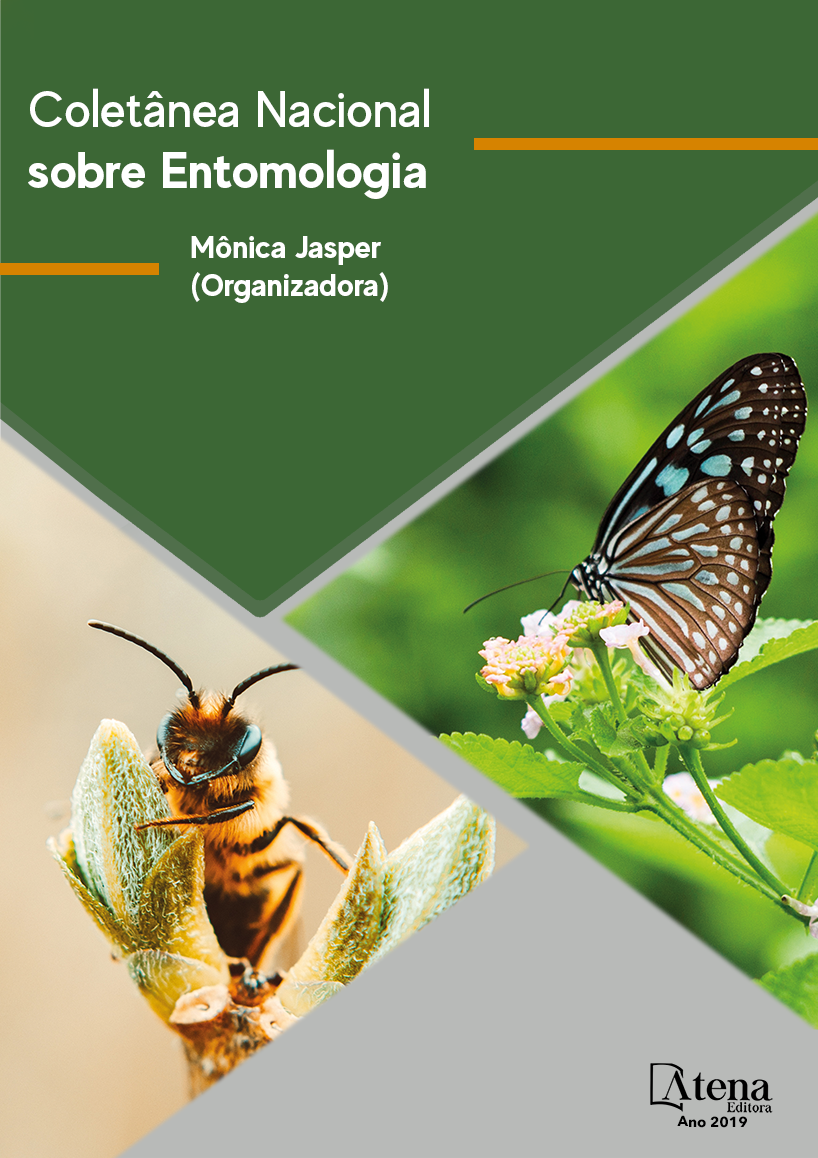
ANÁLISE FAUNÍSTICA E FLUTUAÇÃO POPULACIONAL DE MOSCAS-DAS-FRUTAS (DIPTERA-TEPHRITIDAE) CAPTURADAS EM GOIABEIRA (PsidiumguajavaL.) NO DISTRITO FEDERAL
As moscas-das-frutas da família
Tephritidae são importantes pragas da
fruticultura e a abundância local das espécies
desta família pode ser atribuída, dentre outros
fatores, ao padrão sazonal da frutificação.
Levantamentos em áreas de produção frutícola
tem gerado um conhecimento abrangente
da composição faunística de moscas-dasfrutas.
Entretanto, poucos levantamentos são
realizados em áreas não-comerciais onde as
diversas espécies de plantas em frutificação
tem uma distribuição difusa. O presente estudo
foi em pomar não comercial de goiaba (Psidium
guajava) e teve como objetivo a análises
faunística e de estudo da flutuação populacional
de mosca-das-frutas capturadas ao longo
do tempo em diferentes estádios fisiológicos
de frutificação. Armadilhas McPhail foram
instaladas em goiabeiras presentes em seis
pontos diferentes em área próxima ao Parque
Estação Biológica de Brasília, Distrito Federal.
Em cada armadilha foi usado atrativo alimentar
a base de suco de goiaba na proporção de
25% de suco de frutas para 75% de água. Os
indivíduos coletados levados ao laboratório
onde foram sexados e identificados. Das oito
espécies identificadas no estudo, Anastrepha
fraterculus foi a mais frequente com 37,10%,
seguida por Anastrepha obliqua (30,37%),
Anastrepha striata (17,20%), Ceratitis capitata
(9,95%), Anastrepha bistrigata (3,50%), as
espécies A. grandis, A. leptozona e A. serpentina
apresentaram frequência abaixo de 1%. As
espécies Anastrepha fraterculus, Anastrepha
obliqua e Anastrepha striata foram as espécies
dominantes havendo correlação positiva entre o
período de frutificação a flutuação populacional
dessas espécies.
ANÁLISE FAUNÍSTICA E FLUTUAÇÃO POPULACIONAL DE MOSCAS-DAS-FRUTAS (DIPTERA-TEPHRITIDAE) CAPTURADAS EM GOIABEIRA (PsidiumguajavaL.) NO DISTRITO FEDERAL
-
DOI: 10.22533/at.ed.5041909076
-
Palavras-chave: Tephritidae, Dinâmica Populacional, Correlação, Hospedeiros, Controle Populacional.
-
Keywords: Tephritidae, Population dynamics, correlation, hosts, populational control
-
Abstract:
The fruit flies of the Tephritidae
family are important fruit tree pests, and the
local abundance of the species of this family can be attributed, among other factors, to
the seasonal pattern of fruiting. Surveys in areas of fruit production have generated a
comprehensive knowledge of the composition of fruit flies. However, few surveys are
conducted in non-commercial areas where the diverse species of fruiting plants have
a diffuse distribution. The present study was conducted in a non-commercial orchard
of guava (Psidium guajava) and had as objective the faunistic analysis and study of
the population fluctuation of fruit fly captured over time in different physiological stages
of fruiting. McPhail traps were installed in guava trees present at six different points
in an area near the Parque Estação Biológica de Brasília, Federal District. In each
trap was used attractive food guava juice base in the ratio of 25% fruit juice to 75%
water. The individuals collected were taken to the laboratory where they were sexed
and identified. Of the eight species identified in the study, Anastrepha fraterculus was
the most frequent with 37.10%, followed by Anastrepha obliqua (30,37%), Anastrepha
striata (17,20%), Ceratitis capitata (9,95%), Anastrepha bistrigata (3.50%), the species
A. grandis, A. leptozona and A. serpentina presented frequency below 1%. The species
Anastrepha fraterculus, Anastrepha obliqua, and Anastrepha striata were the dominant
species, with a positive correlation between the fruiting period and the population
fluctuation of these species.
-
Número de páginas: 15
- Matheus Cavalcante Viana
- Helouise Montandon de Carvalho Rocha
- Norton Polo Benito
- Marcelo Lopes-da-Silva
- José Pedro Cavalcante Viana


